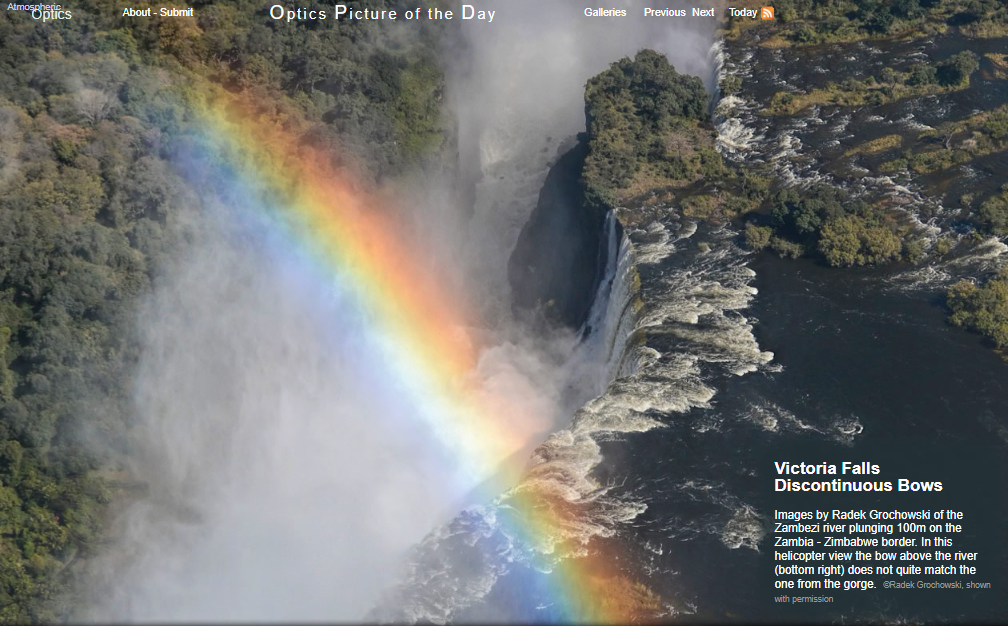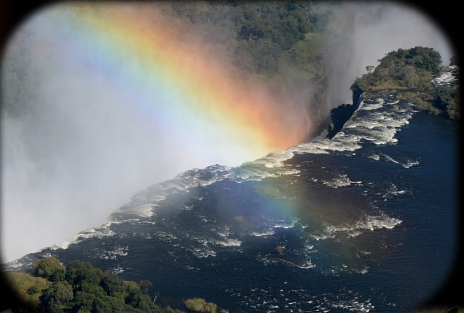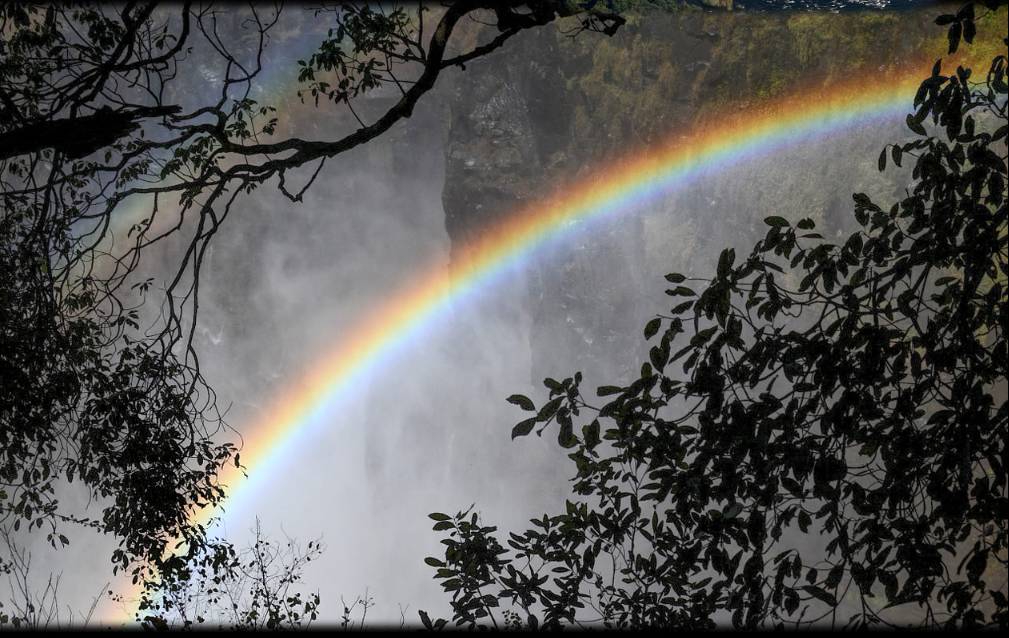Victoria Falls Rainbows - OPOD
Victoria Falls Rainbows - OPOD
Victoria Falls, located on the border of Zambia and Zimbabwe, is renowned for its majestic beauty and awe-inspiring natural phenomena. One of the most captivating sights at Victoria Falls is the occurrence of discontinuous rainbows, which add an enchanting touch to the already breathtaking scenery. These rainbows, captured in stunning images by photographer Radek Grochowski, exhibit fascinating characteristics that can be explained through the principles of atmospheric optics.
When observing the rainbows at Victoria Falls, it becomes evident that the bows above the river and those seen from the gorge do not perfectly match. This disparity can be attributed to the size of the water droplets responsible for creating the rainbows. As the drop size decreases, the radius of the bow shrinks while the color separation widens. The phenomenon of supernumerary rainbows, additional faint rainbows that appear within the primary bow, becomes more prominent as the drop size decreases. The spacing between these supernumeraries also increases, creating a mesmerizing visual display.
Understanding the formation of rainbows requires an exploration of two main processes: refraction/reflection and diffraction/interference. Refraction/reflection is independent of drop size and occurs when light passes through a near-spherical water droplet, resulting in internal reflection. This process is sufficient to create a primary rainbow. On the other hand, diffraction/interference becomes more significant as drops become smaller. It necessitates considering the interaction of clusters of waves rather than straight line rays. Consequently, colors overlap more and become less saturated. When the drops are exceptionally small, the traditional rainbow transforms into a broad, almost colorless fogbow.
The difference in drop sizes gives rise to distinct rainbows at Victoria Falls. The rainbow over the Zambezi River appears slightly broader with inwardly shifted colors due to smaller drops. These drops are propelled upwards from the tumultuous waters of the gorge, and those that reach the top tend to be the smallest. The presence of different-sized drops contributes to the diverse range of rainbows observed at this magnificent waterfall.
Interestingly, the phenomenon of rainbows is not exclusive to large waterfalls like Victoria Falls. A similar effect can be witnessed from a lawn sprinkler, demonstrating that the principles of atmospheric optics apply to various water sources. While rainbows at waterfalls can be predicted and their positions calculated, there is also potential for capturing higher-order bows. Third, fourth, and even seventh-order bows may be visible with careful planning and selection of a suitable dark background for photography.
In conclusion, Victoria Falls offers a captivating spectacle of discontinuous rainbows that add an extra layer of wonder to its already breathtaking scenery. By understanding the principles of atmospheric optics, we can appreciate the unique characteristics of these rainbows, such as their variation in size, color separation, and the prominence of supernumeraries. Whether it be the grandeur of Victoria Falls or the humble beauty of a lawn sprinkler, the magic of rainbows continues to fascinate and inspire us.

Victoria Falls Discontinuous Bows
Images by Radek Grochowski of the Zambezi river plunging 100m on the Zambia - Zimbabwe border. In this helicopter view the bow above the river (bottom right) does not quite match the one from the gorge. ©Radek Grochowski, shown with permission

Airy theory simulations of three rainbows from different mean drop sizes.
As the drop size decreases the bow radius shrinks but the colour separation widens. Colour saturation decreases.
Supernumeraries become more prominent and their spacings increase.
The rainbow over the Zambezi river at right is slightly broader and its colours are shifted inwards - the bow has a smaller radius.
Different sized drops are responsible. Drops are thrown up from the tumult in the gorge and those reaching the top are the smallest.
Two main processes shape rainbows, refraction/reflection and diffraction/interference.
Refraction/reflection is independent of drop size. It is enough for a primary bow that the drop is near spherical and that rays are internally reflected once.
Diffraction/interference becomes more important as drops get smaller. We can no longer consider straight line rays but must instead take account of the interaction of clusters of waves. Colours overlap more and they become less saturated. When the drops are small enough the rainbow is no more - We have instead a broad almost colourless fogbow.

The two rainbows, one from larger drops (left) and (right) one from smaller, are very evident in this image.
A large waterfall is not necessary, a similar effect is visible from a lawn sprinkler.
Higher order bows?
Rainbows at waterfalls are predictable. Their position from hour to hour is known or can be calculated. With some planning a dark background can be selected for photography.
Ideal for 3rd/4th order bows? Or even the next prize, the 7th order?

Note: this article has been automatically converted from the old site and may not appear as intended. You can find the original article here.
Reference Atmospheric Optics
If you use any of the definitions, information, or data presented on Atmospheric Optics, please copy the link or reference below to properly credit us as the reference source. Thank you!
-
<a href="https://atoptics.co.uk/blog/victoria-falls-rainbows-opod/">Victoria Falls Rainbows - OPOD</a>
-
"Victoria Falls Rainbows - OPOD". Atmospheric Optics. Accessed on November 26, 2024. https://atoptics.co.uk/blog/victoria-falls-rainbows-opod/.
-
"Victoria Falls Rainbows - OPOD". Atmospheric Optics, https://atoptics.co.uk/blog/victoria-falls-rainbows-opod/. Accessed 26 November, 2024
-
Victoria Falls Rainbows - OPOD. Atmospheric Optics. Retrieved from https://atoptics.co.uk/blog/victoria-falls-rainbows-opod/.